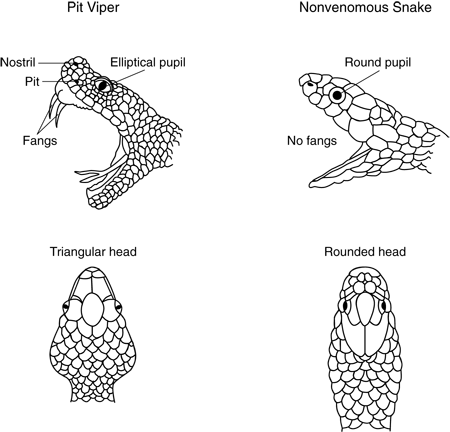Snakes, often perceived with a mix of fascination and fear, are a diverse group of reptiles that have evolved a variety of strategies to survive and thrive in their environments. One of the most intriguing aspects of snake biology is the distinction between venomous and nonvenomous species. This dichotomy is not merely a matter of presence or absence of venom but encompasses a range of evolutionary adaptations, behaviors, and ecological roles.
Venomous Snakes: Evolution’s Deadly Arsenal
Venomous snakes possess a specialized arsenal designed for subduing prey and, in some cases, for defense against predators. Venom is a complex mixture of toxins, enzymes, and other proteins that can cause pain, paralysis, and even death in the snake’s prey. This potent cocktail is delivered through hollow, folding fangs located at the front (in most vipers and cobras) or rear (in many colubrids) of the snake’s mouth.
The evolution of venom is thought to have occurred multiple times independently across different snake lineages, highlighting its effectiveness as an evolutionary strategy. Venomous snakes include some of the most feared species, such as the cobras, rattlesnakes, mambas, and taipans. These snakes have evolved various warning signals, such as bright coloration, hoods, and the characteristic rattle of rattlesnakes, to deter potential threats.
Nonvenomous Snakes: A Variety of Survival Tactics
Nonvenomous snakes, while lacking the potent venom of their venomous counterparts, have developed a plethora of other strategies to survive. These include constriction, where snakes like boas and pythons squeeze their prey to death, and mimicry, where harmless species mimic the appearance of venomous ones to deter predators.
Constrictors are among the largest snakes in the world and can subdue large prey by wrapping around them and tightening their coils with each exhalation of the prey. This method is highly effective and allows these snakes to feed on a wide range of animals.
Mimicry is another fascinating adaptation seen in nonvenomous species. For example, the harmless king snake closely resembles the venomous coral snake, taking advantage of the coral snake’s bright coloration as a warning to potential predators. This resemblance, known as Batesian mimicry, protects the king snake by making it less likely to be attacked.
Coexistence and Conservation
Despite the fear they often inspire, both venomous and nonvenomous snakes play crucial roles in their ecosystems. They help control rodent populations, serve as prey for larger animals, and contribute to the balance of their environments. However, many snake species face threats from habitat destruction, climate change, and persecution by humans.
Conservation efforts are essential to protect these fascinating creatures. Education about snake biology and the distinction between venomous and nonvenomous species can reduce unnecessary fear and promote coexistence. Additionally, supporting protected areas and sustainable land use practices can help preserve the habitats these snakes depend on.
Conclusion
The dichotomy between venomous and nonvenomous snake species is a testament to the incredible diversity and adaptability of life on Earth. While venomous snakes have evolved potent weapons to aid in their survival, nonvenomous species have developed a variety of alternative strategies to thrive in their environments. Understanding and appreciating these differences can foster a greater respect for these often-misunderstood creatures and the important roles they play in our world.
